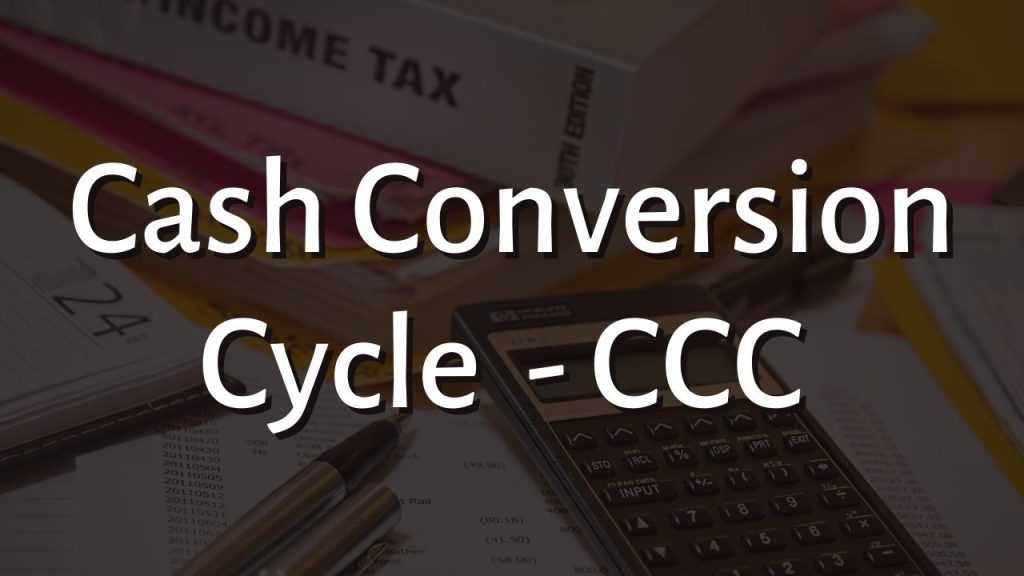Cash Conversion Cycles (CCC)
The cash conversion cycle (CCC) – often known as the cash cycle – is a working capital indicator that describes how long it takes a firm to convert cash into inventory and then back into cash through the sales process. The shorter a company’s CCC, the less time cash is held in accounts receivable and inventories.
The CCC is a significant statistic for businesses that acquire and manage inventory since it indicates operational efficiency as well as financial health. However, it should be considered in conjunction with other financial indicators such as return on equity.
It is also worth noting that CCC is not a major factor for all businesses, as not every corporation will keep physical inventory.
Important Elements of Cash Cycle
The cash cycle is divided into three separate elements. The first element of the cycle indicates the company’s current inventory level and the time it will take to sell this inventory.
This is called Days Inventory Outstanding (DIO). DIO may be calculated by taking your average inventory, dividing it by the cost of goods sold, and multiplying the result by 365.
The current sales and the time it takes to collect the cash from these sales are represented in the second element of the cash cycle.
This is called Days Sales Outstanding (DSO). DSO may be calculated by taking your accounts receivable, dividing it by your net credit sales, and multiplying it by 365.
The current overdue payables are shown in the third element. In other words, this shows how much a firm owes its current suppliers for inventory and products purchases, as well as when the company must pay its vendors.
This is known as Days Payable Outstanding (DPO). DPO is calculated by taking the final accounts payable and dividing it by (cost of goods sold 365).
Cash Conversion Cycle Formula
The cash conversion cycle formula is adding the day’s inventory outstanding and days sales outstanding and then subtracting the days payable outstanding.
Cash Conversion Cycle = DIO + DSO – DPO
The first part of the formula, “DIO + DSO,” is known as the operating cycle, and it is the average number of days for inventory to be transformed into completed goods and subsequently sold, plus the average number of days receivables (A/R) stay outstanding on the balance sheet prior to cash collection.
To calculate the CCC, subtract the average time it takes the firm to pay off its outstanding accounts payable (A/P) balance from the operating cycle.
As a result, the CCC and the phrase “net” operating cycle are used interchangeably.
Cash Conversion Cycle Calculation
After you’ve computed all three of the formula’s needed elements, you may compute the CCC.
Let’s take an example, If a company’s DIO is 80 days, DSO is 40 days, and DPO is 55 days, the cash conversion cycle is computed as follows:
CCC = DIO + DSO – DPO
CCC = 80 + 40 – 55
CCC = 65
The CCC is important information, but it is only helpful if you calculate it every year and compare it to your company’s prior performance (together with the other three parts of the formula).
If your rivals’ financial information is available, you may be able to compare your CCC to theirs. If it isn’t, you may utilize this measure to devise methods to reduce the time business takes to sell merchandise, collect receivables, and pay invoices.
What Does a Negative Cash Conversion Cycle Mean
A negative cash conversion cycle indicates that it takes you longer to pay your suppliers/bills than it does to sell your product and receive your money, implying that your suppliers finance your operations. As a consequence, you do not require operating funds to expand.
A positive cash conversion cycle, on the other hand, indicates that you require operational cash to finance your firm and must continue to infuse funds as your company expands.
Cash Conversion Cycle Vs Operating Cycle
The operational cycle is the number of days that pass between when you purchase merchandise and when consumers pay for it. The cash conversion cycle is the number of days that pass between when you pay for inventory and when you get compensated for it by your customers.
Importance of Cash Conversion Cycle
The cash conversion cycle makes it easy to evaluate a company’s operational effectiveness in managing its resources. The shorter the cash conversion cycle, as with other cash flow computations, the better the firm is at selling inventories and recovering money from these sales while paying vendors.
To acquire further insights, a company’s cash conversion cycle may be compared to other firms in the same sector, and the trend can be evaluated.
This comparison of a company’s cash conversion cycle to previous years’ cycles can assist determine if its working capital management is deteriorating or improving.
Furthermore, comparing the company’s cash conversion cycle to that of its market rivals may be useful in establishing if the company’s cash conversion cycle is ‘normal’ in comparison to industry norms.
For more click here and if you are looking for full forms of different acronyms and words then check out this list you really gonna find this helpful. We also have an Essay on every topic, Check the complete list here. If you are Studying in Matric Free Video Lectures of Maths, Physics and English are here, and we have got you covered for I.COM Business Maths also.







